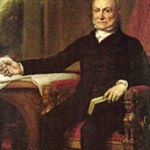John Fitzgerald Kennedy was the 35th president of the United States. He was 43 at the time of his election and the only Roman Catholic to be elected at the time. His presidency only last approximately 1000 days because on November 22, 1963, John F. Kennedy was struck by an assassin’s bullet in Dallas, Texas and died the same day. Myths and legends surround the man, and his life here on earth. Myth also swirls around the days of “Camelot” A King Arthur play of the time that personified a time of brilliance and historical significance.
Today, there are many untruths that Americans believe about JFK and truths that many did not want to believe but are undeniable fact.
However, there are ten important specifics that are interesting details concerning the life of John F. Kennedy that help clarify the man.
1) During the 1000 days of the Kennedy Administration, Kennedy proposed a Department of Urban Affairs. It was struck down by southern Democrats, at the time due to their belief that Kennedy would appoint an African-American as secretary.
Kennedy’s stance on Civil Rights is presented as ambivalent. But, those who are historically accurate when studying his positions should first listen to his Civil Rights Speech, and then be aware of fact number 2.
2) John F. Kennedy submitted the Civil Rights Act towards the end of 1963. It did not become law until after his death. This legislation is largely credited to the Johnson Administration, as it surely should be because LBJ did sign the bill. And, more than likely, without Johnson’s command of the legislative body as the time, it may not have become law. But, the creator and original proponent of the bill was JFK.
3) JFK did not begin the Vietnam War. However, he did escalate it. Plans were in the works though, with evidence found in National Security Action Memorandum 263, written by Kennedy, to reduce the troop level by 1000 troops by the end of 1963. This memorandum was invalidated by Lyndon Johnson after Kennedy’s assassination.
4) John F. Kennedy did have Addison’s Disease and did keep it hidden from the public eye. This would have been impossible today, with the rabid news atmosphere that we are living in in 2007, but in the fifties and sixties of the 20th century reporters provided a cloak of privacy around the personal lives of many public figures.
5) John F. Kennedy made a visit to what would become his final resting place, Arlington National Cemetery for Armistice Day, November 11, 1961.
6) After the splendor, full military honors, and national bereavement throughout the United States, that the Kennedy funeral brought to the world, Charles DeGaulle, then Prime Minister of France, stated he wanted a very simple funeral. He felt that the Kennedy funeral had been ridiculous in its superciliousness. His tombstone merely stated his name and time of birth and death.
7) Kennedy attended Stanford Graduate School in 1940. He interrupted his studies to join the United States Navy during World War II.
8) John F. Kennedy’s ambivalent position on Sen. Joseph McCarthy’s senatorial censure did not endear him to the liberal wing of the Democratic Party, nor to former First Lady Eleanor Roosevelt. McCarthy was a friend of Joseph Kennedy, father of JFK, and he had also dated Kennedy’s sister, Patricia.
9) When Kennedy was assassinated United States television networks went on 24 hour coverage for the first time in history.
10) John F. Kennedy outlined the goals of space program for America in May of 1961, to, ” have a man land on the moon, and return him safely to earth, because this decade is out.” America met this goal.
As is evident, Kennedy was a man of many shades and colors. He was 46 years old when he was assassinated and no matter what the criticisms or accolades, he surely gave America hope and brilliance during the times of his life.
Reference:
- Wikipedia www.wikipedia.com


